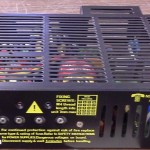Could heat be causing your power supply failures? Very likely and it has a name: “thermal aging”. Thermal aging (which means heat is making your components get OLD fast!) is an expensive trouble maker.
Knowledge is power. Here are some things to know about heat and how to protect your power supplies and other electronics.
Did you know the components in your power supply that are most at risk for failure are:
- Capacitors (Electrolytic (worst), Ceramic or Film)
- Transformers/Chokes (Magnetics)
- Optocouplers/LEDs
- Solder Joints
Capacitors, especially electrolytic capacitors, are usually the most sensitive to excess heat and often the first component to fail in a power supply. This is because electrolytic capacitors are one of the few electronic components that use liquid for functional operation. Heat causes the gradual evaporation of their liquid electrolyte which then decreases their ability to hold a charge.
Electrolytic capacitors have a lifetime of about 10 to 20 years in ideal conditions. Heat will greatly reduce their life. Even sitting unused they will eventually dry out so that later, when you turn the power supply on, the electric current makes heat which reacts with the chemicals in the capacitor, making it bulge. A bulging capacitor is a damaged capacitor.
Most modern capacitors will bulge and break safely and gradually at a scored spot meant to relieve the pressure (although it will still damage the cap), but preventing pressure build-up and a potential explosion which would be far more catastrophic.
Film capacitors, on the other hand, become brittle from the heat and will eventually crack. They are also more sensitive to voltage variations. The result? No output and power supply repairs required.
Solder joints hate heat too, and they are especially sensitive to drastic temperature changes. When the temperature varies, the components and circuit boards expand in the heat and contract in the cold but by different amounts. This leads to solder cracks and joint failures. Repeated exposure to temperature changes (thermal cycles) such as during on/off cycles, weekends and/or plant shut-downs can eventually result in solder cracks and of course, no output for you.
Tight spaces = too much trapped heat = damaged electronics. Sealed, gasketed enclosures trap heat and shorten the life of your power supplies and other electronics. But here’s where size matters! The larger the surface area or volume of the enclosure the lower the temperature rise, meaning your equipment will last longer.
If your work is outside you need to consider the heat generated by the equipment itself as well as the solar heat gain from the sun. Consider all of these when determining heat load:
- Total surface area and/or volume of the enclosure or cabinet
- Color of the cabinet (darker colors absorb more heat; lighter colors will reflect heat away)
- Internal heat load from the equipment itself
- Ambient temperature (outside or inside temperature where work is occurring)
Another important word to know about power supplies and heat is “derating”. Derating basically means the fundamental limit of a power supply is how hot they can get before failing. For example: a 100 watt power supply cannot run at 1000 watts because components inside would get too hot and FAIL.
If you are running a power supply in a hot area (such as an unvented cabinet) you will need to cut back the rated power to make up for the fact that it cannot get rid of its own heat. A derating curve can tell you what the tradeoff is and how to use that information. The manufacturer of your power supply can help you get and apply this information.
If all of this adds up to excess heat, what should you do about it? In a word: air. Using appropriate industrial fans inside a machine enclosure can improve heat dissipation by a minimum of 10% and usually MUCH more, which adds up over time.
Just in case you were thinking of opening the cabinet doors and aiming a floor fan at your equipment, you should know that this is NOT the way to go. This is extremely dangerous and there are OSHA regulations you can check regarding this.
Another option, which can be a bit more expensive, is compressed air cabinet coolers which cool the cabinet as needed.
Cooling your power supplies can go a long way toward extending the life of your power supplies as well as your other electronic equipment – the more air that flows through the enclosure the better.
If it’s too late and you need power supply repairs check first to see if your equipment is still under warranty. If so, contact the OEM about repairs. If it is out of warranty, hopefully you have a go-to repair center.
If not, contact an independent industrial electronic repair center to find out if they are a good fit for your company and your particular repair needs. They should offer free evaluations for your damaged power supply and other equipment, and a free quote for repairs (no bench fees!). They should also provide repair reports if requested and a good warranty of at least one year that covers both parts and labor.
About the Author: ACS Industrial Services is an independent industrial electronic repair center providing power supply repairs for all types and manufacturers, circuit boards, drives, servo motors, CNC equipment, encoders, monitors and touchscreens, PLCs, test equipment, and much more. Rush Service is available and Two Year Warranties cover most repairs. The customer service team is available to answer your questions and help solve your industrial electronic repair concerns. You can reach them by calling 800-605-6419 or going to www.acsindustrial.com.

